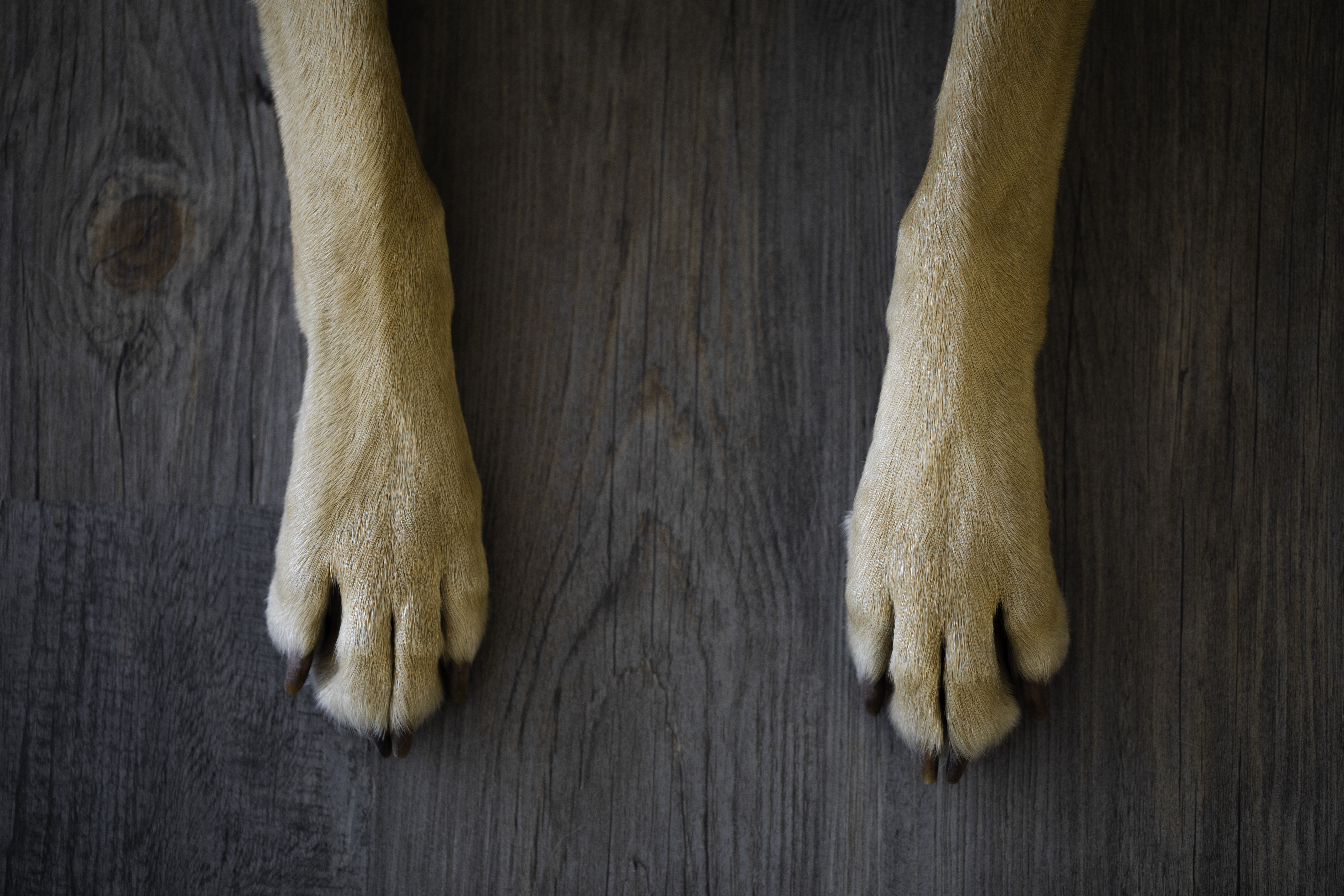
5 Natural Remedies for Dry or Cracked Paws in Dogs
As the weather shifts from fall to winter and snow begins to cover the ground, one thing dog owners will need to be wary of is dry or cracked paw pads. Dry air, freezing-cold ice and salt or other de-icers can wreak havoc on your pup’s paws during winter walks, eventually leading to painful cracks and even infections.
If you notice that your pup’s paws are starting to look and feel a little dry in the winter months, there are a number of things you can do to help them heal and prevent infections from making walking, jumping and playing painful for your four-legged friend.
Prevention is best
Although there are many natural remedies for dry paw pads, the best way to help protect your pooch’s paws is by preventing dryness from setting in or worsening to begin with. If your climate is very cold in the winter, try introducing socks or booties to your pup during walks to protect their precious paws. These can help prevent salt and other chemical de-icers from hurting the paw pads, as well as keep the paws covered so dry, frigid ground conditions in the winter—or extremely hot pavement in the summer—won’t suck moisture out of the paws.
Not every dog will tolerate socks or booties, though, and that is perfectly normal. If you can’t get your pup to keep their paw pad protection on long enough for a walk around the block, try to avoid harsh-looking areas covered in salt to minimize the damage, as well as keep your medicine cabinet stocked with natural paw pad moisturizers and crack remedies in case the dryness gets too severe.
Natural remedies to heal dry paws

If your dog does develop dry or cracking paws during the winter months, there’s no need to fret. There are many natural remedies to help re-introduce moisture into the paw pads and heal the cracks, so they don’t become infected or painful.
When choosing paw repair remedies, steer clear of products that contain lots of chemical ingredients and fragrances, as these compounds can irritate the skin more. Additionally, always make sure the products you choose contain dog-safe ingredients. Just because a product is “natural,” it does not mean it cannot be toxic to pups.
Try these five natural, dog-safe remedies, instead:
- Shea butter: Derived from the fat of shea nuts, shea butter is well-known for its highly moisturizing properties. This ingredient can penetrate deeply into the paw pad and hydrate from within. Shea butter is not toxic to dogs, so if they lick it off their paws, it won’t make them sick.
- Coconut oil: Coconut oil is something found in most people’s pantries, but it has many more applications than people tend to think. Coconut oil contains antimicrobial compounds that can help minimize the risk of infection of severely cracked paws. It is also very moisturizing to help combat dryness.
- Vitamin E oil: Vitamin E oil can help soften and heal dry, cracked skin. Many vitamin E oils come packaged as a cream, much like coconut oil or shea butter.
- Calendula extract: Calendula is a floral herb that contains soothing, anti-inflammatory compounds that can help reduce pain or irritation on dry, cracked paw pads.
- Specialized paw cream: Specialized paw creams tend to incorporate a blend of the ingredients listed above with other soothing and moisturizing ingredients for a highly efficient and safe healing formula for dry paws.

During the winter months, or whenever dry paws become a problem for your pup, many of these natural remedies can be applied to the paws before and after outdoor walks, as well as whenever the paws need a little extra moisturization. Try to apply these products when your dog is less active, such as when they are sleeping, so the ingredients actually have time to sink into the paw pads and do not get licked off or rubbed off when your dog is running around. You can also cover your dog’s feet with socks after rubbing the creams or oils into their paws to prevent transfer.
Another important thing to remember is that your dog’s paw pads should not be super soft to the touch. Dog’s paws act like our shoes, so they need to be a little tough in order to protect the feet from rough surfaces and outdoor materials! Don’t overdo it when applying moisturizing ingredients to your dog’s paws. Instead, only apply products as needed when you notice your dog experiencing pain or discomfort due to dryness or cracking.


